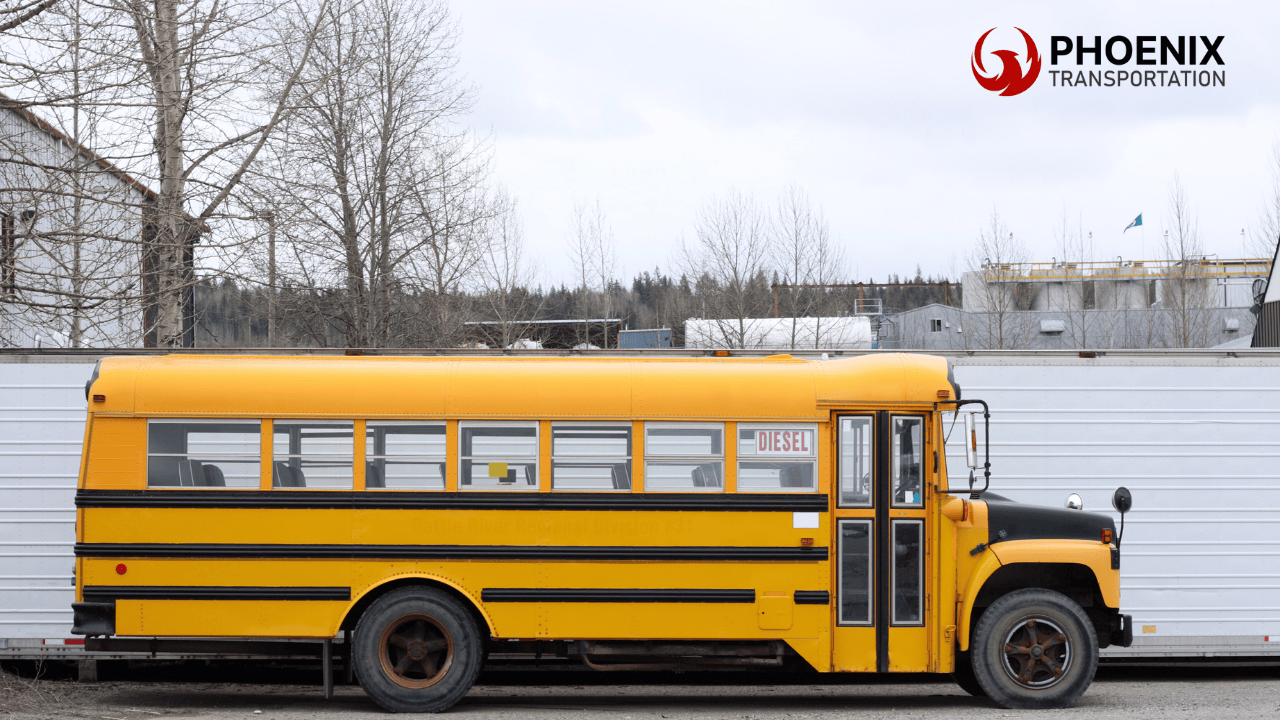Most school buses range from 20 to 45 feet long, depending on their type. Short buses (Type A and B) are typically 20–35 feet, while full-size buses (Type C and D) measure 35–45 feet and carry up to 90 passengers. Size affects everything from passenger capacity and fuel efficiency to maneuverability and route suitability.
Key Takeaways:
Type A and B buses: 20–35 feet long, seat 10–36 passengers
Type C and D buses: 35–45 feet long, seat up to 90 passengers
Smaller buses are better for tight city routes and special needs
Larger buses handle higher capacity and longer rural routes
Factors like safety, turning radius, fuel cost, and accessibility all depend on bus size
Ever wondered how long is a school bus is and why its size plays such a crucial role? Whether you’re planning transportation for a school event, considering a bus for a private group trip, or just curious about these iconic yellow vehicles, understanding their dimensions can make all the difference.
From maneuverability on city streets to seating capacity for students, the length of a school bus directly impacts its function and safety. Let’s break down the different sizes of school buses and explore why choosing the right one truly matters.
Standard School Bus Sizes: A Detailed Overview
When discussing school bus sizes, it’s crucial to understand that there isn’t a single standard length. Instead, buses come in multiple sizes to accommodate various needs.
Small School Buses (Type A and Type B)
Type A buses, known as mini buses, are built on a cutaway van chassis with a left-side driver’s door. They measure 20–25 feet and seat 10–30 passengers, ideal for small groups or special needs transportation.
Type B buses are slightly larger, built on a stripped chassis with the entrance door behind the front wheels. With lengths of 25–35 feet and space for 30–36 passengers, they’re ideal for medium-sized routes and navigating narrow streets efficiently.
These smaller buses are ideal for transporting students in rural or congested urban areas where maneuverability is essential. They’re also widely used for special education transportation, where fewer passengers require accommodations.
Full-Size School Buses (Type C and Type D)
Type C buses, commonly recognized as the classic “yellow bus,” measure between 35 and 40 feet long. These buses carry up to 72 passengers for elementary school students or 48 passengers for high school students, based on seating regulations.
Type D buses are the largest. Known as transit-style buses, they can reach lengths of 40 to 45 feet and accommodate up to 90 passengers at maximum capacity. Their flat-front design allows better visibility for drivers and increased space for students.
Why Does Bus Size Matter?

The school bus length plays a vital role in its operation, safety, and suitability for specific environments.
Passenger Capacity and Safety
Larger buses like Type C and D are preferred for densely populated school districts because they can transport more students per trip. This reduces traffic congestion, fuel consumption, and operational costs. Smaller buses are essential for specialized needs and navigating narrow roads.
Size also influences safety. Larger buses provide enhanced crash protection due to their robust frames and higher weight, while smaller buses offer better maneuverability in tight spaces.
Maneuverability and Accessibility
Maneuverability is a key factor when choosing a school bus. Compact buses are ideal for urban routes with tight corners, narrow streets, and limited parking spaces. Their smaller size allows for easier navigation in busy city environments, ensuring safe and efficient transportation.
In contrast, rural areas often require full-size buses. These larger vehicles handle longer routes and carry more students comfortably. Additionally, they offer better accessibility options like wheelchair lifts, thanks to wider doorways and spacious interiors.
Fuel Efficiency and Cost Implications
Smaller school buses are a smart choice for routes with fewer students. They offer better fuel efficiency, consume less energy on shorter trips, and are generally more cost-effective to operate and maintain. This makes them ideal for specialized routes or areas with lower demand.
On the other hand, larger buses are more expensive to run but excel in high-demand areas. Their higher capacity reduces the need for multiple trips, ultimately helping to balance operational costs over time.
Key Dimensions of a School Bus Beyond Length
While length is crucial, other dimensions also determine how a bus performs.
Width
Standard school buses are typically 8 to 8.5 feet wide, not including mirrors. This width allows them to fit comfortably within regular traffic lanes and meet road safety regulations. It also provides sufficient interior space to accommodate seating arrangements, aisles, and safety features without compromising maneuverability on narrow streets.
Height
School buses generally have an exterior height ranging from 10 to 11 feet. This ensures they can safely pass under bridges and overpasses. Interior ceiling heights, often between 6 to 7 feet, give students and staff enough headroom for safe standing, boarding, and movement, particularly in larger bus models.
Wheelbase and Turning Radius
The wheelbase, the distance between front and rear axles, directly influences a bus’s turning radius. Smaller school buses with shorter wheelbases achieve tighter turning radii of about 25 feet, ideal for urban settings. Larger buses, however, require broader turns, needing up to 40 feet or more for effective maneuvering.
How to Choose the Right School Bus Size
When selecting a bus, schools and transportation companies must assess:
- Route characteristics (urban vs. rural)
- Number of students per route
- Special needs requirements
- Budget constraints
- Parking and storage space
By evaluating these factors, decision-makers can balance operational efficiency and student safety effectively.
The Role of Regulations in School Bus Size
Federal and state regulations play a crucial role in determining school bus dimensions, ensuring safety and efficiency for students during school trips and campus shuttle services. Agencies like the National Highway Traffic Safety Administration (NHTSA) establish strict standards that govern aspects such as maximum bus length, width, and height. These standards are designed to promote safe maneuverability on roads, proper weight distribution, and enhanced visibility for drivers.
In addition, regulations require school buses to have sufficient emergency exits, proper aisle widths, and structural integrity to protect passengers. For school trips and campus shuttle operations, adhering to these guidelines ensures consistent performance, passenger safety, and compliance with legal requirements.
Conclusion: Why Size Truly Matters in School Buses
Choosing the right school bus size isn’t just about fitting more passengers—it’s about ensuring safe, efficient, and comfortable transportation for every journey. From compact mini buses perfect for tight city routes to full-size buses built for maximum capacity, each option serves a unique purpose. Considering factors like route type, passenger needs, and operational costs helps schools and organizations make the best decision.
For school trips, conference shuttle services, or private group event transportation in San Francisco, trust the experts at Phoenix Transportation. Their fleet includes buses of all sizes to match your exact needs while prioritizing safety and comfort. Call Phoenix Transportation San Francisco today to book a reliable ride tailored to your group’s requirements.



